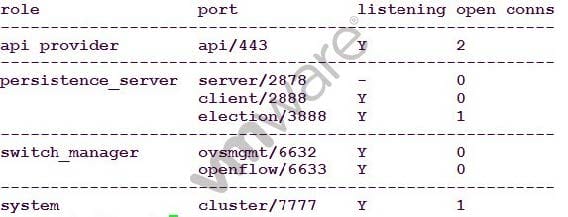Which two are valid statements regarding third-party services and NSX? (Choose two.)
A. Third party services are automatically registered with NSX Manager.
B. Third party services can either be automatically or manually registered with NSX Manager.
C. Third party services require the deployment of a virtual appliance.
D. Third party services may or may not utilize a service virtual appliance.
How does NSX simplify physical network design?
A. VLANs are moved into the virtual network for virtual machine traffic, eliminating the need to use Private VLANs on the physical network.
B. Network administrators only need to configure routing on the physical network for virtual machine traffic since all other network functions are moved to the virtual network.
C. Transport zones are created in the virtual network for virtual machine traffic, removing the need to make changes to the physical network.
D. Virtual network integration can make changes to the physical network programmatically using REST API calls which automates network changes and increases agility.
You have deployed a two-tiered application using four virtual machines:
Two virtual machines are web application servers
Two virtual machines providing a clustered database service
What feature can you configure to provide the most accurate account for only the traffic between the web servers and the clustered database?
A. On the vSphere Distributed Switch, configure the use of a port mirroring session using the Encapsulated Remote Mirroring (L3) Source session type.
B. On the vSphere Distributed Switch, configure the use of a port mirroring session using the Remote Mirroring Destination session type.
C. On the vSphere Distributed Switch, configure the use of an Isolated Private VLAN for the ports of the four virtual machines.
D. On the vSphere Distributed Switch, configure Netflow for the distributed virtual port group and enable Process internal flows only for the distributed switch.
How is the Bridge Instance chosen?
A. It is chosen based on the ESXi host where the Logical Router Control VM is running.
B. It is manually assigned by the vSphere administrator when the distributed portgroup is configured.
C. During an election process among all ESXi hosts. The host with the highest MAC address is selected.
D. The VTEP configured with the highest VXLAN Network Identifier (VNI) is selected.
A company hosts an internal website on multiple virtual machines attached to a Logical Switch with VNI 7321. A Distributed Router serves as the virtual machines' default gateway.
When a user resolves the URL for the website, the internal DNS server responds with the IP address of one of the virtual machine's IP addresses in a round robin fashion. This approach results in some virtual machines having a much higher number of user sessions than others.
The company wants to deploy a NSX Edge Service Load Balancer to improve on this situation. Which distribution method can be configured on the NSX Edge Load Balancer to meet the company's needs?
A. LEAST_CONN
B. IP_HASH
C. LEAST_LOAD
D. URI
A vSphere administrator wants to setup an NSX Edge Service Gateway to provide traveling employees secure access to company servers located in specific network segments within the corporate Data Center. The remote access solution must provide a method to authenticate the users.
Which two methods can be used with the NSX Edge Service Gateway? (Choose two.)
A. TACACS+
B. MS-CHAP
C. RSA Secure ID
D. Active Directory
An NSX Edge Service Gateway has two interfaces:
Internal interface named Internal Access -- IP address = 10.10.10.1 -- Network mask = 255.255.255.0
Uplink interface named Physical Uplink -- IP address = 20.20.20.1 -- Network mask = 255.255.255.0 A vSphere administrator wants to add a SNAT rule to allow traffic from the internal network segment to
access external resources via the uplink interface.
Which three steps should the vSphere administrator do to add the SNAT rule? (Choose three.)
A. Apply the SNAT rule to the Internal Access interface.
B. Select 10.10.10.1 as the translated source IP.
C. Apply the SNAT rule on the Physical Uplink interface.
D. Select 10.10.10.0/24 as the original subnet.
E. Choose 20.20.20.2 as the translated source IP address.
Which tool is used to detect rogue services?
A. NSX Logical Firewall
B. NSX Logical Router
C. Activity Monitoring
D. Flow Monitoring
What is the function of NSX Data Security?
A. Prevents sensitive data in your virtualized environment from being copied
B. Prevents sensitive data in your virtualized environment from being modified
C. Identifies sensitive data in your virtualized environment based upon regulation security policies
D. Identifies sensitive data in your virtualized environment based upon regulation violation reports
-- Exhibit -

-- Exhibit -
An administrator is troubleshooting a NSX controller cluster issue and runs the control-cluster command,
as shown in the Exhibit.
What information can be determined from the output provided in the exhibit?
A. This is the control cluster majority leader controller.
B. There are two controllers in the cluster.
C. This is not the control cluster majority leader controller.
D. The persistence_server role is not functioning correctly.